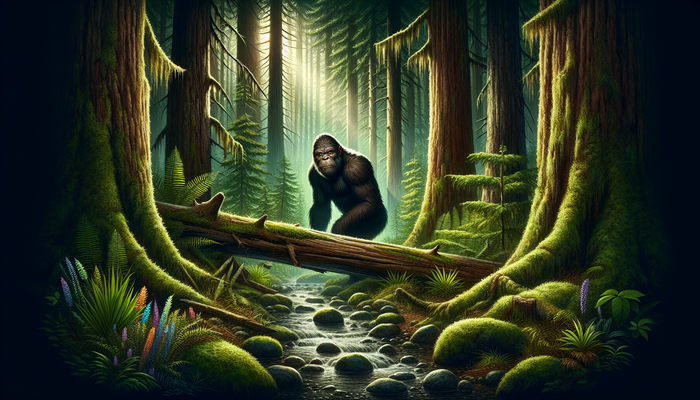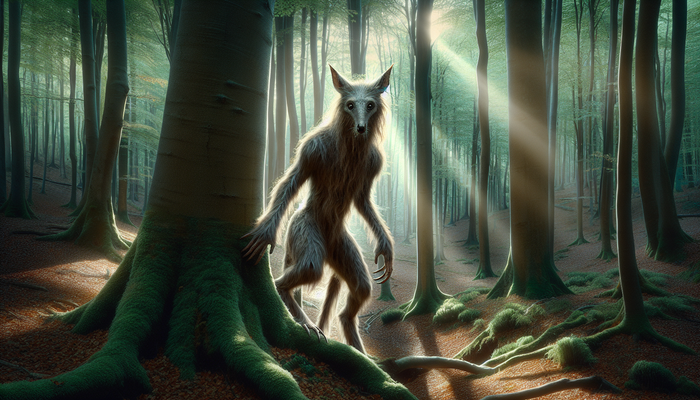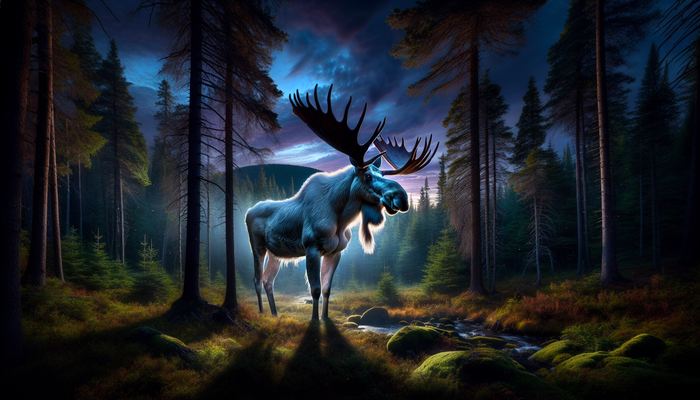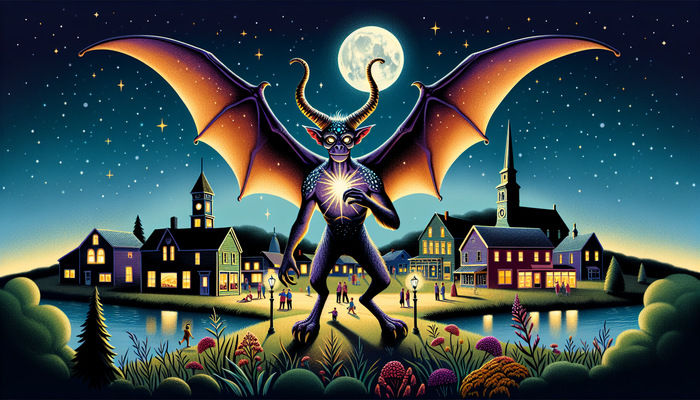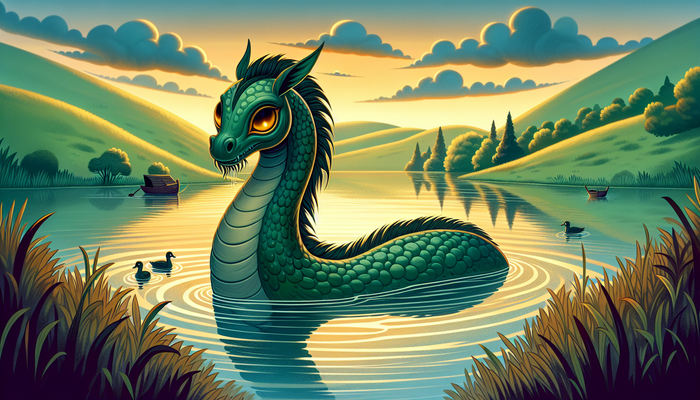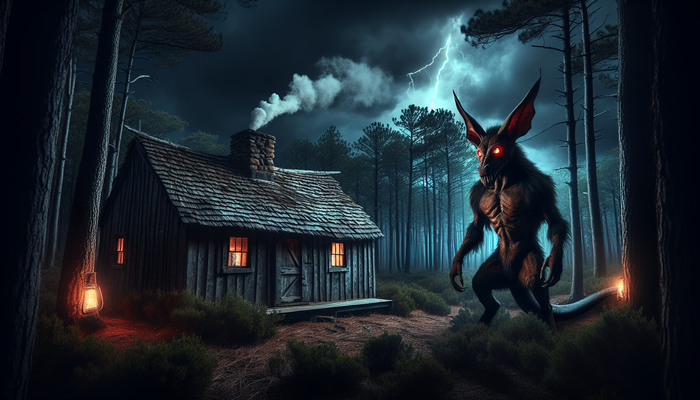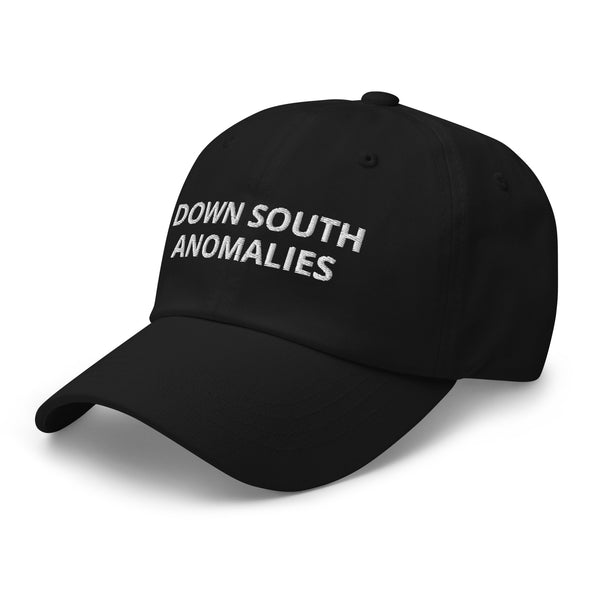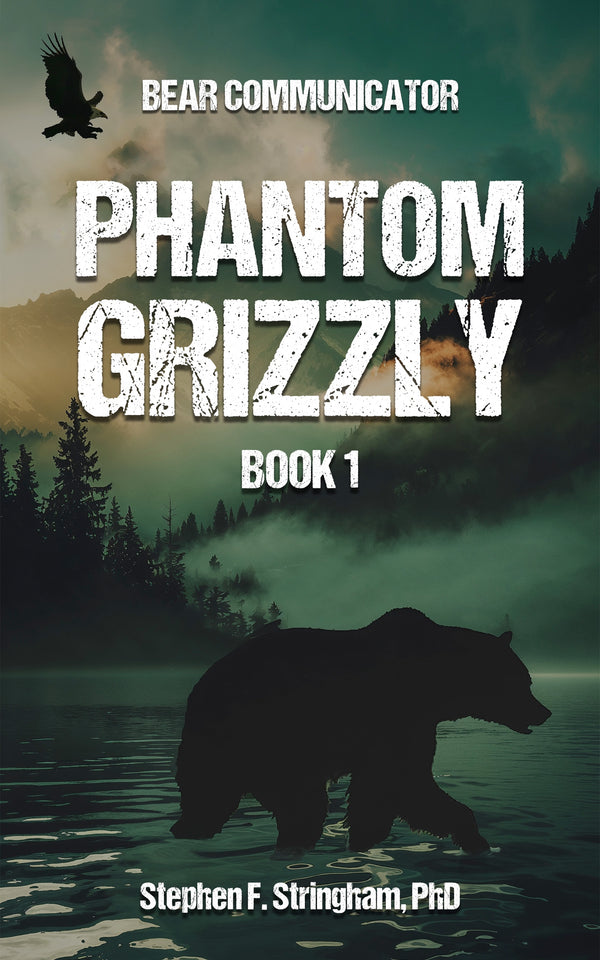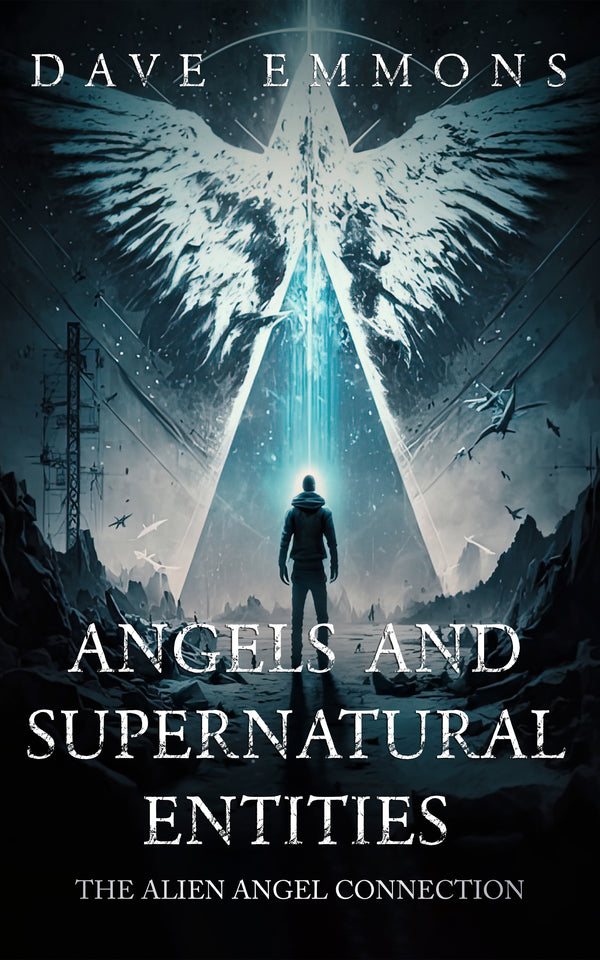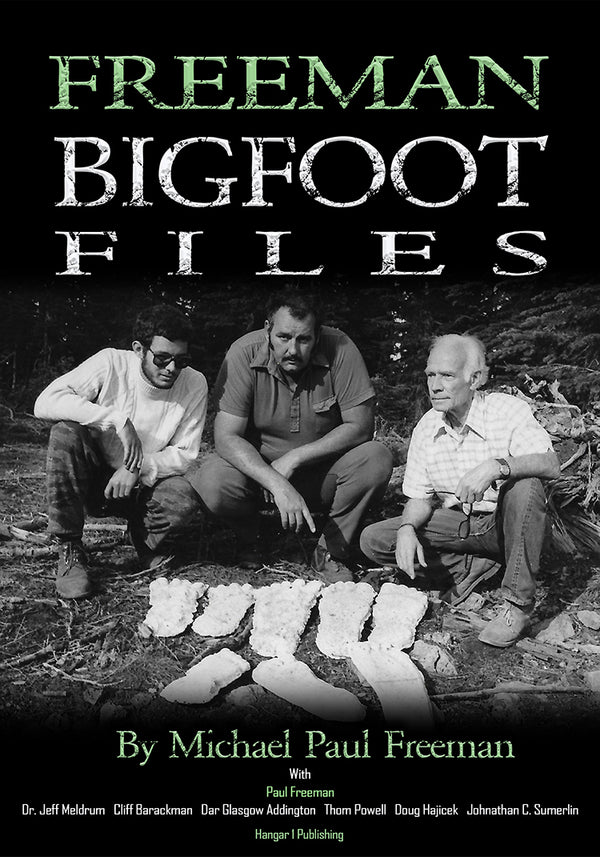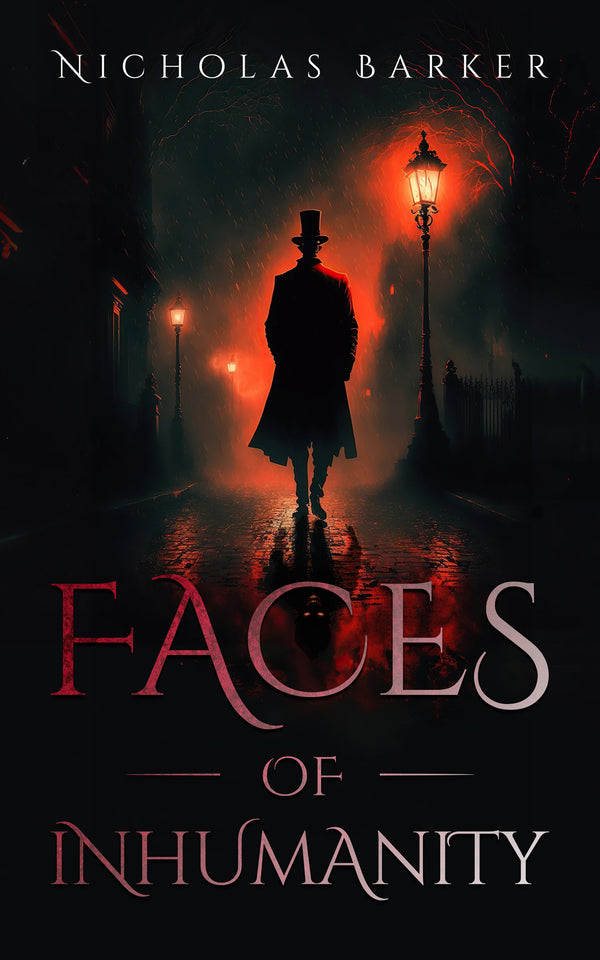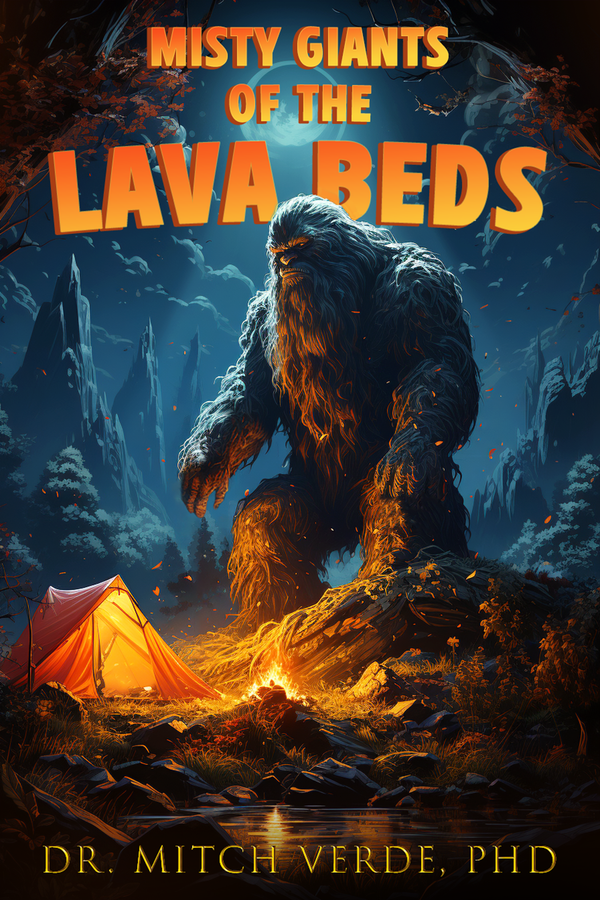Menagerie of Kansas Cryptids

By Anthony Romano, Bigfoot Researcher and Engineer
Kansas - More Than Meets the Eye
At first glance, Kansas might seem like just another unassuming Midwestern state, known more for its vast wheat fields and friendly small towns than anything particularly mysterious or strange. But as someone who has dedicated much of my life to exploring the unknown and the unexplained, I've learned that appearances can be deceiving. Beneath the surface of this seemingly ordinary place lies a rich tapestry of folklore, legend, and cryptozoological intrigue that rivals any other state in the nation.
You see, Kansas is a hotbed of cryptid activity. For those unfamiliar with the term, "cryptids" are animals whose existence is unproven or disputed - creatures like Bigfoot, the Loch Ness Monster, and the Chupacabra that have been sighted by many but confirmed by none. And Kansas, it turns out, has more than its fair share of these elusive beasts.
From the murky depths of its lakes to the shadowy corners of its forests, strange creatures are said to roam the Sunflower State. Some, like the infamous Sinkhole Sam, have become local legends, the stuff of campfire stories and regional tall tales. Others, like the Bigfoot-like Beman or the nightmarish Wendigo of Native American lore, hint at darker, more ancient mysteries.
As a software engineer by trade and a cryptid researcher by passion, I've always been drawn to these sorts of enigmas. There's something profoundly compelling about the idea that there might be creatures out there that science has yet to catalog, beasts that defy our understanding of the natural world. And so, armed with an analytical mind, a healthy dose of skepticism, and a burning curiosity, I've set out to unravel the mysterious menagerie of Kansas cryptids.
In the pages that follow, I'll take you on a journey through the weird and wonderful world of Kansas cryptozoology. We'll explore the history, the sightings, and the theories surrounding the state's most famous cryptids, and we'll delve into some of the lesser-known legends as well. Along the way, we'll grapple with the bigger questions that these creatures raise - about the nature of belief, the limits of our knowledge, and the enduring power of mystery in an age of reason.
So join me, if you will, on a trek through the shadows of the heartland. Keep your eyes peeled and your mind open. Because in Kansas, you never know what might be lurking just beyond the wheat fields, waiting to be discovered.
Sinkhole Sam: The Legendary Lake Monster
In the quiet town of Inman, Kansas, there's a lake with a curious name and an even more curious legend. Inman Lake, also known as "The Sinkhole," is said to be home to a massive, serpentine creature known as Sinkhole Sam - or, to use his more colorful moniker, the "Foopengerkle."
According to eyewitness reports, Sinkhole Sam is a sight to behold. He's described as being anywhere from 15 to 30 feet long, with a body as thick around as a car tire. Some say he has a flat, almost prehistoric-looking head, while others claim to have seen a distinctive tail fin cresting the murky waters of the lake.
The legend of Sinkhole Sam dates back to 1952, when a pair of fishermen had a terrifying encounter with the beast. As they cast their lines into the depths of the Sinkhole, they suddenly saw a massive, serpentine form breach the surface of the water. It was, they would later recount, unlike anything they had ever seen - a creature that seemed to belong to another age, another world.
News of the fishermen's sighting spread like wildfire through the small town, and before long, Sinkhole Sam had become a local sensation. More eyewitnesses came forward with their own tales of the beast, each more fantastic than the last. Some claimed to have seen Sam swallow entire cows whole. Others swore that the creature had tried to snatch children from the shoreline. A few even whispered that the Foopengerkle was an ancient, prehistoric monster that had somehow survived into the modern day, hidden away in the depths of the Kansas lake.
As the legend grew, so too did the attempts to explain Sinkhole Sam's origins. Some speculated that he was a remnant from the time when Kansas was covered by a vast inland sea, a marine reptile that had somehow adapted to freshwater over the millennia. Others suggested that Sam had been washed into the lake during a particularly severe flood, carried in from some distant river or ocean.
Of course, there were also plenty of skeptics who dismissed the whole thing as a hoax or a case of mistaken identity. They argued that eyewitnesses had likely seen nothing more than a large eel or an escaped exotic pet snake, their imaginations running wild in the heat of the moment. And indeed, despite numerous expeditions over the years, no concrete evidence of Sinkhole Sam's existence has ever been found.
But for those who have seen the beast with their own eyes, the legend of Sinkhole Sam is all too real. They speak of a creature that defies explanation, a monster that haunts the depths of a seemingly placid Kansas lake. And even today, more than half a century after that first fateful sighting, the Foopengerkle remains an enduring part of Kansas folklore - a reminder that even in the heartland of America, mysteries still lurk beneath the surface.
The Monster Snake of Kingman County
Sinkhole Sam isn't the only serpentine cryptid said to slither through the waterways of Kansas. About 50 miles to the south of Inman lies Kingman County State Lake, a man-made body of water with a monstrous reputation of its own.
For decades, locals have whispered about a creature known as the Sink Hole Serpent or the "Monster Snake" - a massive, python-like beast that's said to lurk in the murky waters of the lake. According to legend, this fearsome creature has a taste for livestock, and has been known to drag unlucky cattle down to a watery grave.
Sightings of the Monster Snake reached a fever pitch in the late 1960s, when a rash of livestock mutilations around the lake had locals on high alert. Farmers reported finding the half-eaten carcasses of cows and sheep along the shoreline, their bodies bearing the unmistakable marks of a large, powerful predator.
Determined to get to the bottom of the mystery, a group of intrepid hunters organized an expedition to track down and kill the Monster Snake. Armed with rifles and harpoons, they combed the swamps and marshlands around the lake, searching for any sign of the elusive creature.
But despite their best efforts, the hunters came up empty-handed. The Monster Snake, it seemed, was an expert at evading capture, slipping away into the depths of the lake whenever danger approached. Some began to wonder if the creature was even real at all, or if it was just another tall tale cooked up by bored farmers with too much time on their hands.
As the years went by, sightings of the Monster Snake became less and less frequent. Some say the creature finally met its end at the hands of a lucky hunter. Others believe it simply moved on to greener pastures, finding a new home in some distant swamp or river. But for those who lived through the terror of the Kingman County Monster Snake, the memory of the beast still lingers - a reminder that even in the most unassuming of places, danger can lurk just beneath the surface.
Bigfoot Sightings in Kansas
When most people think of Bigfoot, they picture the dense forests of the Pacific Northwest or the remote mountains of the Himalayas. But believe it or not, the legendary ape-man has also been spotted right here in the heartland of America - and Kansas has had more than its fair share of sightings over the years.
In fact, reports of large, hairy, bipedal creatures roaming the woods and prairies of Kansas date back more than a century. One of the earliest and most intriguing accounts comes from Crawford County, way back in 1869.
According to the story, a group of settlers were out hunting when they came across a creature that defied explanation. It was, they said, an enormous, gorilla-like beast, standing upright on two legs and covered in shaggy, dark hair. The creature was so human-like in its appearance and movements that the hunters hesitated to shoot, fearing they might be committing murder.
Word of the sighting quickly spread, and before long, the "wild man of Crawford County" had become a local legend. More eyewitnesses came forward with their own tales of the beast, describing a creature that walked with a strange, loping gait and left behind footprints that were far too large to be human.
Despite the numerous sightings, however, the wild man always managed to evade capture. Search parties were organized, traps were set, but the creature seemed to melt away into the wilderness whenever anyone got too close. Some began to wonder if the beast was even real at all, or if it was just a figment of overactive imaginations.
But the sightings continued, not just in Crawford County but all across the state. In the decades that followed, Kansans reported seeing Bigfoot-like creatures in the woods around Wichita, in the hills of the Flint Hills, and even in the suburbs of Kansas City. Some described the beasts as gentle giants, more curious than aggressive. Others spoke of a creature with glowing red eyes and a fearsome roar, a monster straight out of a nightmare.
As a cryptid researcher, I've always been fascinated by these Bigfoot sightings. On the one hand, the sheer volume of reports over such a long period of time suggests that there might be something more than mere legend at play here. After all, can so many eyewitnesses across so many decades all be mistaken or lying?
But on the other hand, the lack of concrete physical evidence - a body, a clear photograph, a DNA sample - makes it difficult to say for certain whether Bigfoot really exists, in Kansas or anywhere else. As with so many cryptids, the truth seems to lie somewhere in the murky space between belief and skepticism, between the known and the unknown.
Perhaps one day, we'll have the answers we seek. Perhaps a lucky hunter will finally bag a Bigfoot, or a hiker will stumble across incontrovertible proof of the creature's existence. Until then, the legend of the Kansas Bigfoot remains just that - a legend, a mystery that continues to captivate and intrigue us, even in the face of doubt and disbelief.
The Beman and Old Sheff: Bigfoot Variants
While Bigfoot may be the most famous of Kansas's ape-like cryptids, he's certainly not the only one. Over the years, locals have reported seeing a variety of different hairy, bipedal creatures roaming the state's forests and prairies, each with its own unique characteristics and backstory.
One of the most intriguing of these Bigfoot variants is the creature known as the Beman. According to legend, the Beman is the offspring of a massive gorilla that escaped from a circus train wreck in the early 1900s. The story goes that the gorilla, which was said to be a fearsome beast standing over eight feet tall, managed to break free from its cage during the accident and disappeared into the wilderness of southeast Kansas.
For years after the wreck, locals reported seeing a huge, ape-like creature roaming the woods near the crash site. Some claimed that the beast had taken up residence in an abandoned mine shaft, emerging only at night to forage for food and terrorize unwary travelers. Others whispered that the Beman had even managed to breed with the local wildlife, giving rise to a new species of hybrid ape-monster.
Sightings of the Beman continued for decades, with eyewitnesses describing a creature that stood upwards of ten feet tall and left behind enormous, three-toed footprints in its wake. Some even claimed to have found strange, nest-like structures in the woods, made from broken branches and lined with leaves and animal fur - possible evidence of the Beman's presence.
Another Bigfoot-like creature said to haunt the wilds of Kansas is Old Sheff, a shaggy, ape-like beast that's been spotted in the southeastern corner of the state for over a century. According to legend, Old Sheff is a solitary creature, more reclusive than aggressive, that prefers to keep to the deep woods and avoid human contact whenever possible.
Eyewitnesses describe Old Sheff as a massive, heavily-built creature, with long arms and a loping, almost clumsy gait. Some say he has a distinctive, almost human-like face, with deep-set eyes and a prominent brow ridge. Others claim that he emits a powerful, musky odor, like wet dog mixed with rotting vegetation.
Despite numerous attempts to track down and capture Old Sheff over the years, the creature has always managed to elude his pursuers. Some locals even claim that the beast has supernatural powers, able to vanish into thin air or even shape-shift into other animals to avoid detection.
As a cryptid researcher, I find the legends of the Beman and Old Sheff to be particularly fascinating. On the one hand, they share many similarities with classic Bigfoot sightings - the large size, the ape-like appearance, the elusive nature. But on the other hand, they also have their own unique twists and turns, from the Beman's circus origins to Old Sheff's alleged supernatural abilities.
Of course, as with all cryptid legends, the truth behind the Beman and Old Sheff remains elusive. Are they real creatures, as yet undiscovered by science? Are they simply tall tales, the product of overactive imaginations and the human love for a good story? Or are they something in between, a mix of fact and fiction that hints at a deeper, more primal mystery?
These are the questions that keep me up at night, the riddles that drive my research and fuel my fascination with the unknown. And while I may never find the answers I seek, I take comfort in the knowledge that I'm not alone in my quest. For as long as there are shadows in the woods and mysteries in the world, there will be those of us who are drawn to explore them - the cryptid hunters, the seekers of the strange and the unexplained.
Native American Cryptid Legends
Of course, the history of cryptid sightings in Kansas goes back much further than the white settlers and circus train wrecks of the early 1900s. For centuries before Europeans ever set foot on this land, the Native American tribes of the Great Plains were spinning their own tales of strange and mysterious creatures - beings that blur the line between the natural and the supernatural, the human and the animal.
One of the most intriguing of these Native American cryptids is the Deer Woman, a figure that appears in the folklore of many different tribes across the region. According to legend, the Deer Woman is a shapeshifting spirit that can take the form of a beautiful young woman, a white-tailed deer, or sometimes a hybrid of the two.
In her human form, the Deer Woman is said to be a seductress, luring men away from their homes and families with her beauty and charm. But woe betide the man who falls under her spell, for the Deer Woman's true nature is far from benevolent. Some stories describe her leading her victims deep into the woods, only to trample them to death beneath her hooves.
From Bigfoot to UFOs: Hangar 1 Publishing Has You Covered!
Explore Untold Stories: Venture into the world of UFOs, cryptids, Bigfoot, and beyond. Every story is a journey into the extraordinary.
Immersive Book Technology: Experience real videos, sights, and sounds within our books. Its not just reading; its an adventure.


